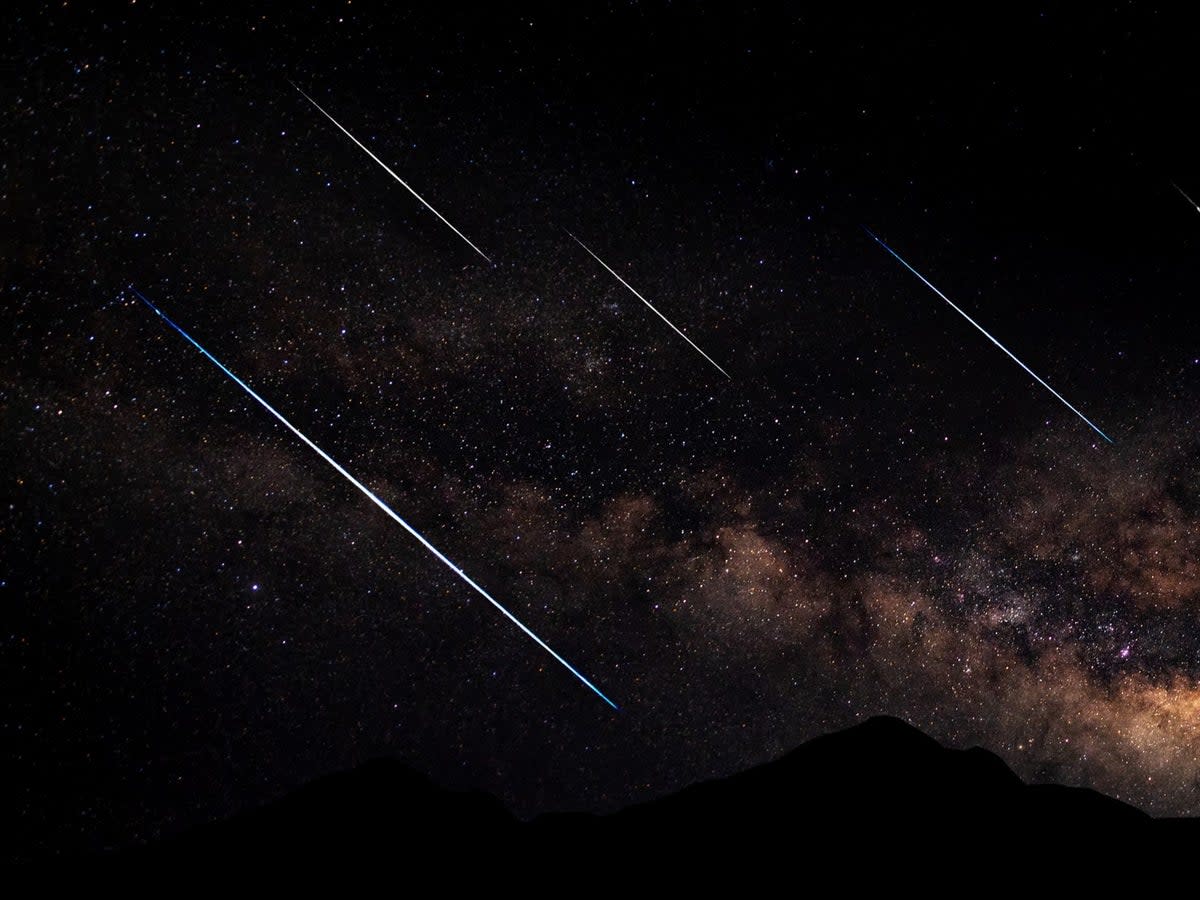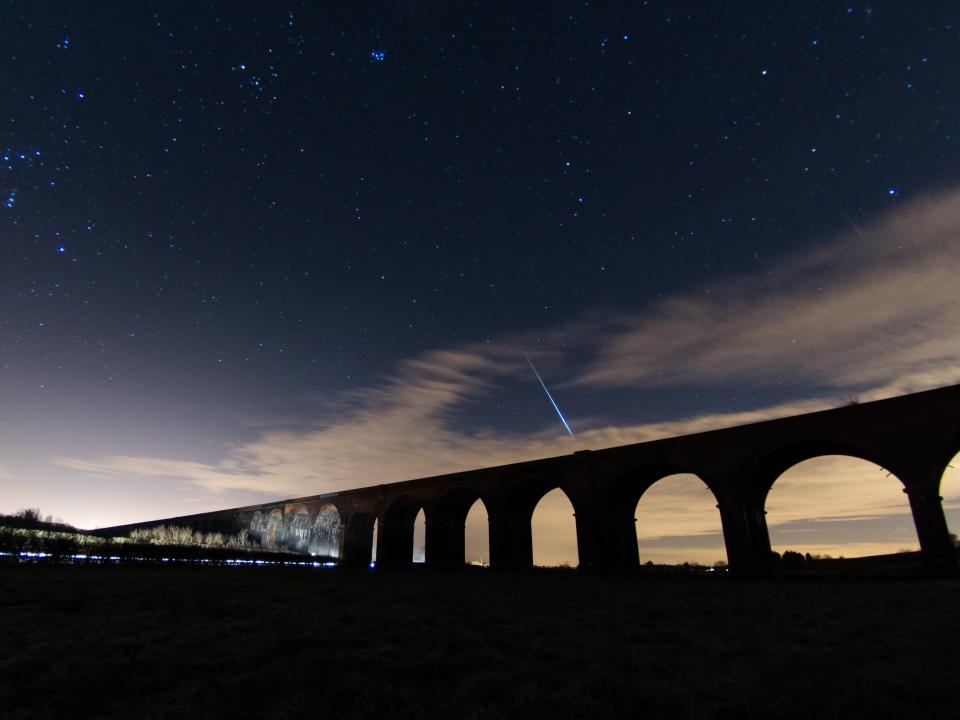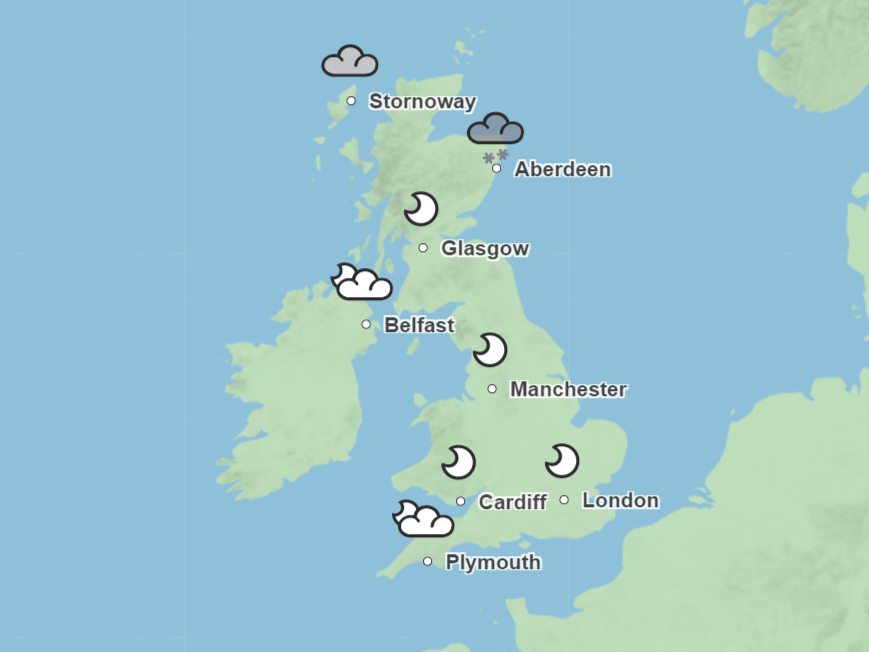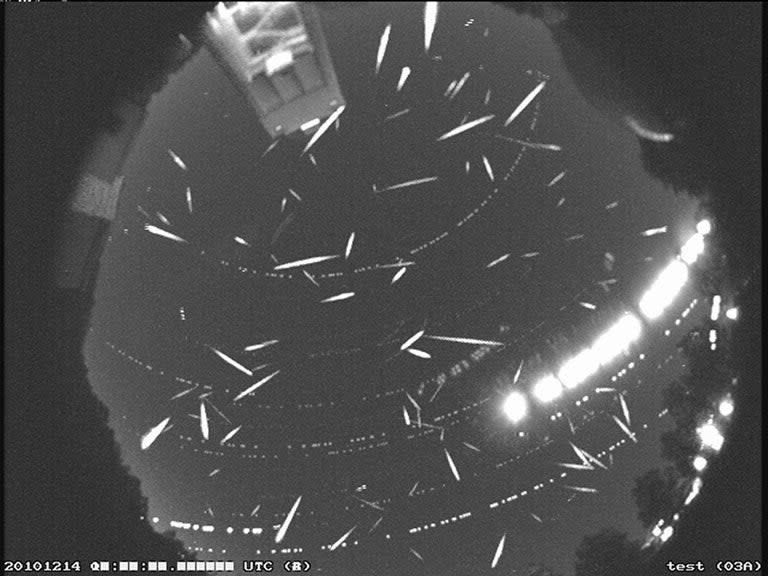Geminid meteor shower 2022 – live: Biggest ‘shooting stars’ event of the year peaks tonight

The Geminidmeteor shower is peaking on Wednesday night, with bright dazzling ‘shooting stars’ streaking across the sky.
The celestial event happens every December, though 2022 brings excellent viewing conditions across most of the UK.
It is unusual in that it is caused by the debris left behind by an asteroid. When the Earth moves through that trail of debris, the pieces smash into our atmosphere and light up as they do, appearing as streaking stars across the sky.
Usually, as many as 150 meteors per hour can be seen in the show, which makes it among the best of the year for actually spotting a meteor.
This year, the brightness of the Moon will have a slightly diminishing effect, with Nasa predicting between 30-40 meteors per hour.
Forecasts from the UK Met Office suggest ideal weather conditions on Wednesday night, with clear skies across most parts of the UK.
Key points
How to see the Geminids meteor shower
Not long left to see shooting stars
Where to watch meteor shower from
Geminid meteor shower gets underway in the UK
17:58 , Anthony Cuthbertson
According to Anna Gammon-Ross, an astronomer at Royal Observatory in Greenwich, the Geminid meteor shower will begin to be visible in the UK tonight from 6pm GMT. That’s right now, so if the skies are clear in your area, take a look outside.
“For the best chances to spot the Geminids, find a dark area of clear sky and allow around 20 minutes to let your eyes adapt to the dark,” she says. “It may also be advisable to lie down as you may be looking up for a long time.”
If you miss them tonight, don’t fret. Anna says they’ll still be visible up until 20 December.

Nasa predicts 30-40 Geminids meteors per hour tonight
16:21 , Anthony Cuthbertson
Weather may be great (at least in the UK) for viewing the Geminids meteor shower tonight, but a recent full moon means it will be slightly harder than if the Moon was closer to a new moon.
Nasa predicts between 30-40 ‘shooting stars’ per hour at its peak.
“Don’t miss the annual Geminids meteor shower,” Nasa tweeted.
“A waning gibbous moon will make it harder to view most of the shower, but the Geminids burn so bright, up to 30-40 should be visible per hour!”
Time to shine. 💫
Don’t miss the annual Geminids meteor shower, peaking between Dec. 13-14. A waning gibbous moon will make it harder to view most of the shower, but the Geminids burn so bright, up to 30-40 should be visible per hour! https://t.co/UNdSYSK8CL pic.twitter.com/JlM0pKvL5P— NASA (@NASA) December 13, 2022
Weather forecast suggests clear skies across most of the UK
15:02 , Anthony Cuthbertson
The weather could almost not be better for a December evening, with the UK Met Office forecasting clear skies across most parts of the country this evening.
Other than parts of Cornwall and Devon, people in England and Wales should be able to expect a good showing once the Sun goes down. Unfortunately, conditions in north-easterly Scotland and Northern Ireland don’t look ideal.
Here’s how the weather will look at 10pm GMT tonight, according to the Met Office’s latest forecast:

Where should you watch from?
13:52 , Andrew Griffin
To give yourself the best chance of seeing the meteors, you’re going to want to be in the best place. There are plenty of things to do to make sure you’re watching in the best way.
The usual advice is that it’s best to get away from buildings and other sources of light to watch the meteor shower. In many places, at this kind of year, that’s going to be very difficult, given the weather.
Because of the intensity of the moonlight this year, however, you might actually do well to sit in the shade of a house or a tree. That will help keep your view from being blocked by the bright Moon.
Otherwise, get into as wide open and dark space as you can, given the conditions. Light pollution like street lights will still make it harder to see the sky, so even a slight reduction in the amount of interference will help.
Once that’s done, look up. The meteors will appear to come from anywhere in the sky, so as long as you’re looking towards the stars you’re in with a chance of seeing one.
(They’ll appear to come from the Gemini constellation – hence their name – but looking just at that can actually limit the number you’ll see. Instead, pick a dark patch of the sky and stay alert.)
Shower is peaking – and there’s just a couple of days left
12:34 , Andrew Griffin
The true peak of the meteor shower is early on 14 December. There’s still some time to see it, though – but not much time. The last opportunity is 17 December, though there won’t be many to see then.
Nasa image shows Geminids at their peak
12:33 , Andrew Griffin
This image, taken in 2014, shows what a good night of Geminids looks like. More than 100 meteors can be seen in the composite image.

How to see the Geminid meteor shower
12:29 , Andrew Griffin
Here’s our full guide for spotting the Geminid meteor shower tonight.
Hello and welcome...
12:22 , Andrew Griffin
... to The Independent’s coverage of the Geminid meteor shower.

